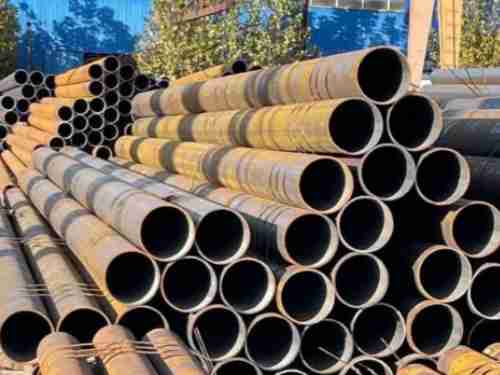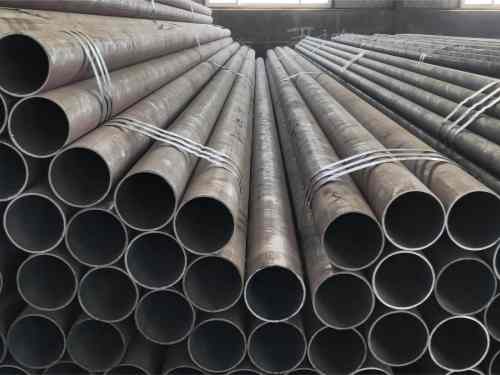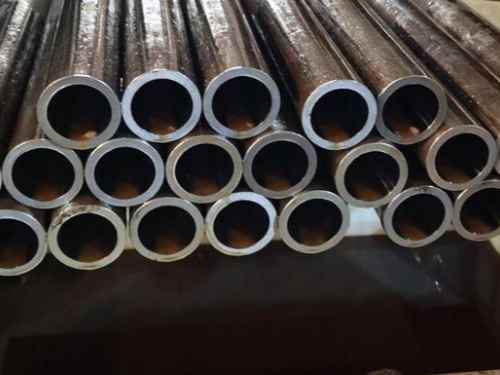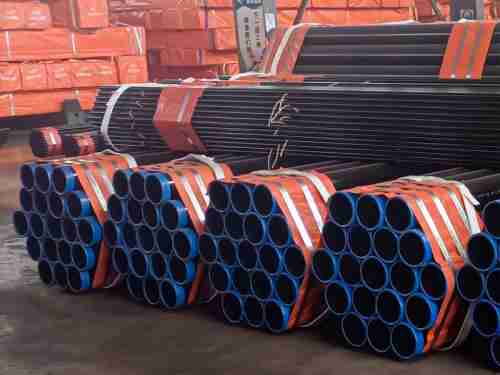Threading and rolling process of alloy steel pipe
The threading and rolling processes are critical for the manufacturing of alloy steel pipes, enhancing their mechanical properties and suitability for various applications.
Threading process of alloy steel pipe
The threading process involves creating threads on the ends of alloy steel pipes. These threads allow for easy connection with other pipes and fittings, ensuring a secure and leak-proof assembly. The threading process can be broken down into several key steps:
Cutting: The pipe is cut to the desired length using a cutting machine.
Facing: The cut ends of the pipe are faced to ensure they are smooth and perpendicular to the pipe axis.
Thread Cutting: Threads are cut onto the pipe ends using a threading machine or a die. This can be done using various methods, such as manual threading, semi-automatic threading, or fully automated CNC threading.
Inspection: The threads are inspected for accuracy and quality using gauges to ensure they meet the required standards.
Finishing: The threaded ends are finished with protective coatings to prevent corrosion and ensure longevity.
Rolling process of alloy steel pipe
The rolling process is used to shape the alloy steel pipe and improve its mechanical properties. This process involves passing the steel through a series of rollers to reduce its thickness and achieve the desired diameter and wall thickness. The rolling process can be categorized into two types:
- Hot Rolling:
Heating: The steel is heated to a high temperature (typically above its recrystallization temperature) in a furnace.
Rolling: The heated steel is passed through a series of rollers, which gradually reduce its thickness and shape it into a pipe.
Cooling: The rolled steel is cooled in a controlled manner to achieve the desired mechanical properties.
Cutting and Finishing: The rolled steel is cut to the required length and finished to remove any surface imperfections.
- Cold Rolling:
Preparation: The steel is cleaned and prepped before rolling.
Rolling: The steel is passed through a series of rollers at room temperature, which reduces its thickness and improves its surface finish and dimensional accuracy.
Annealing: The cold-rolled steel is annealed to relieve internal stresses and enhance its ductility.
Finishing: The steel is finished to meet the required specifications and cut to the desired length.
Key benefits of alloy steel pipe
Enhanced Strength: Both threading and rolling processes improve the mechanical properties of alloy steel pipes, increasing their strength and durability.
Precision: The processes ensure that the pipes meet precise dimensional standards, which is crucial for their use in various industrial applications.
Corrosion Resistance: Threaded ends and rolled surfaces can be coated with protective materials to enhance their resistance to corrosion.
Applications of alloy steel pipe
Alloy steel pipes that undergo threading and rolling processes are widely used in industries such as:
Oil and gas
Chemical processing
Power generation
Construction
Automotive
These processes ensure that the alloy steel pipes are robust, reliable, and fit for use in demanding environments.

 English
English Español
Español











